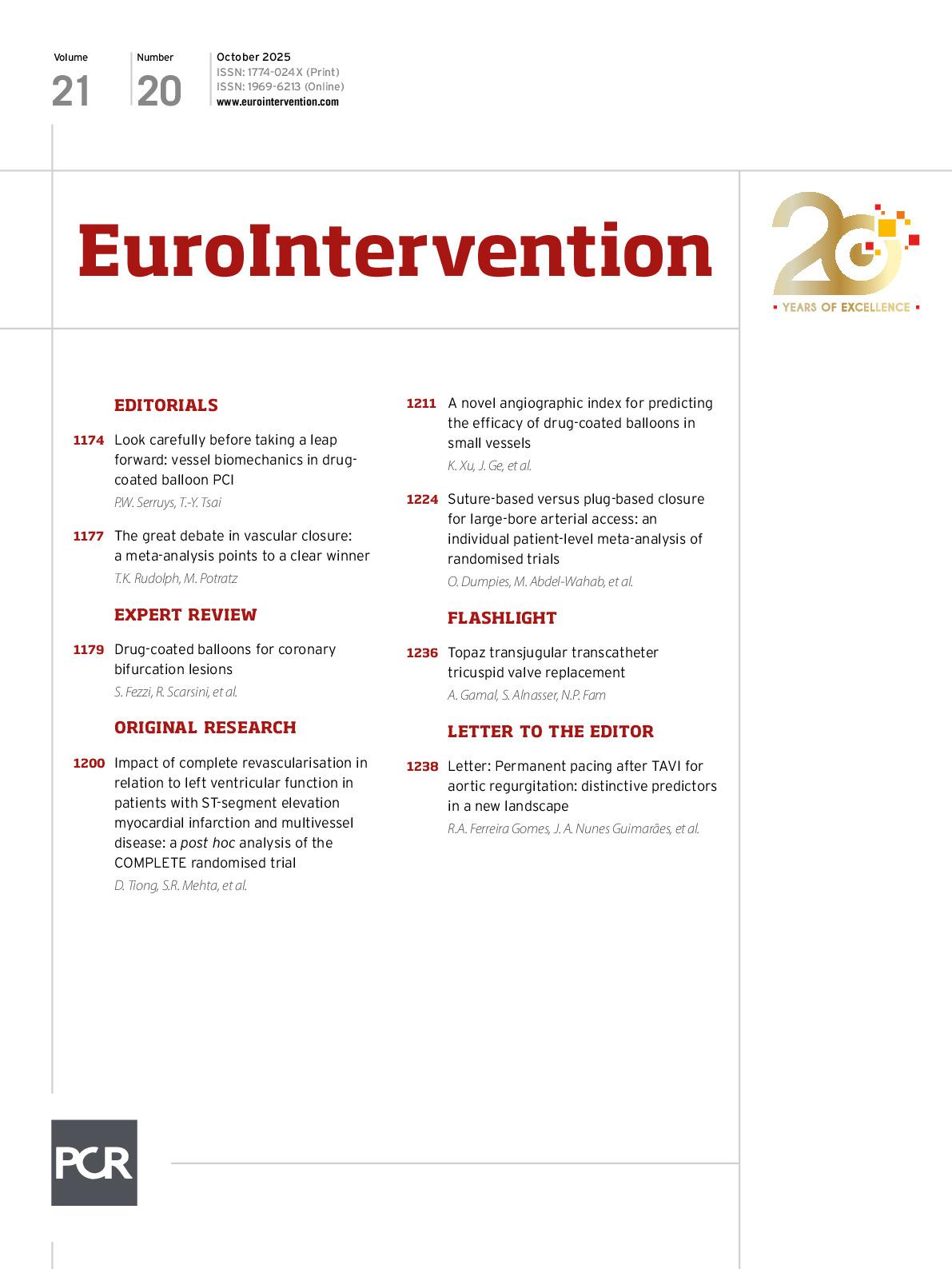The revolutionary forms of transcatheter interventions share a critical Achilles’ heel: the large-bore arterial access site, a primary source of complications that can increase morbidity, mortality, and healthcare costs1. Consequently, achieving reliable haemostasis is fundamental. Two competing vascular closure device strategies have dominated: the suture-based ProGlide (Abbott) and the plug-based MANTA (Teleflex). The debate over which is superior has been fuelled by conflicting data from observational studies and underpowered trials, leaving the clinical community in equipoise2. In this issue of EuroIntervention, Dumpies and colleagues provide much-needed clarity with a robust, individual patient-level meta-analysis of the key randomised trials – MASH-TAVI3 and CHOICE-CLOSURE4. By isolating the highest-quality randomised data, their work cuts through the noise of confounding and selection bias that has clouded previous analyses, offering a decisive perspective5. The authors performed a rigorous individual patient-data meta-analysis of the MASH-TAVI and CHOICE-CLOSURE trials, including 722 transcatheter aortic valve implantation (TAVI) patients randomised to either suture- or plug-based closure. The primary endpoint was in-hospital major and minor vascular complications according to Valve Academic Research Consortium-3 criteria. The...
Sign up for free!
Join us for free and access thousands of articles from EuroIntervention, as well as presentations, videos, cases from PCRonline.com

